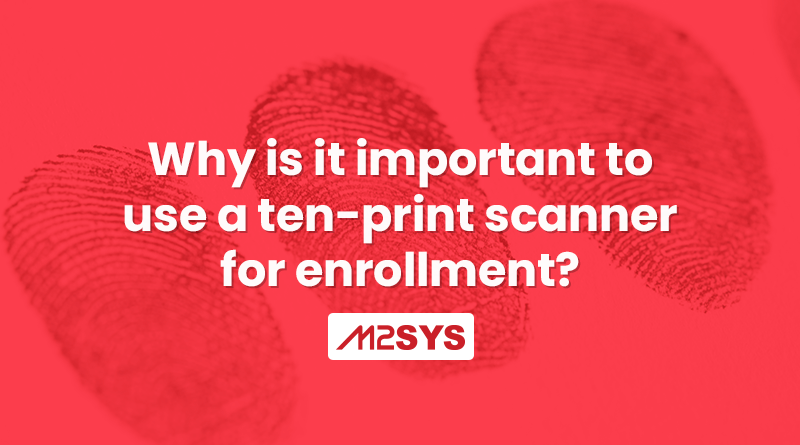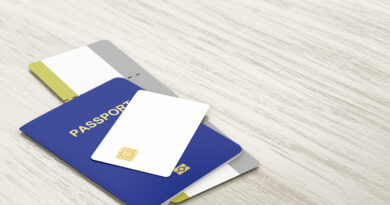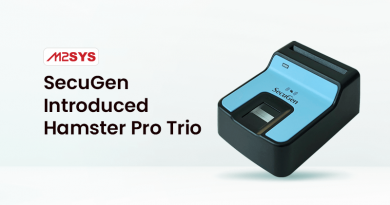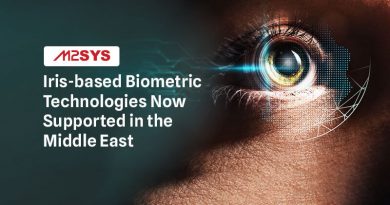Why is it important to use a ten-print scanner for enrollment?
Nowadays, everyone is aware of the fingerprint security system on smartphones, office door access control, and banking and financial services. Businesses consider fingerprints as the best option for authentication due to their convenience and use. However, many applications require multiple fingerprint authentication because using just one fingerprint is unfeasible.
Indeed, in many situations, multiple fingerprint authentication is required. Consider a situation when a person tries to use fingerprint authentication to complete a transaction at an ATM or bank, for example. Unfortunately, that person was unable to correctly authenticate her fingerprint due to factors including excessive sweat, wounds or other medical conditions, fading from oil or other chemical applications, and other medical issues. In such circumstances, people may ask for password authentication. However, this might provide a security issue, particularly with regard to banking, the financial sector, and civilian verification. Multiple fingerprint authentication thus helps reduce these problems.
How are multiple fingerprints enrolled?
The standard procedure for enrolling ten fingerprints is to capture three sets of fingerprint cards: the left four fingers in one slap, the right four fingers, and both thumbs, so that there will be three fingerprint cards for an individual as his fingerprint identity. The fingerprint cards are captured with ten-print slap scanners, or FAP 40 and above (Fingerprint Acquisition Profile) devices.
The ten-print scanner
The ten-print scanner, also called the 4-4-2 scanner, is a fingerprint enrollment device that produces high-quality fingerprint images. Because it must enroll four fingers in one slap, it will have a larger capture area than standard fingerprint scanners used for identification. And the image quality is very high since it has to segment each fingerprint image out of the four fingerprint sets.
Each fingerprint in a four-slap print will have the adequate quality to segment each of them. The device will reject the slap if it doesn’t meet the image quality and asks for enrollment again. The captured four-slap prints can be segmented into individual fingerprints with the help of software for later verification purposes. Unlike ordinary fingerprint verification devices, ten-print scanners can be used for both verification and enrollment. In addition, it supports LiveScan, which is beneficial for border security and law enforcement agencies.
Applications where ten-print scanner is important
Ten-print enrollments are beneficial in applications that demand high throughput and accuracy. There are several applications where enrolling all ten fingerprints is necessary, including those listed below:
1. Civil ID registration
Biometrics has become the primary citizen authentication method for the disbursement of government subsidies and schemes. People from various sectors may try to authenticate in different circumstances. In such cases, the false rejection of fingerprints often happens due to skin conditions, dirt, or wounds, but people can try to authenticate with their other fingers. It increases the convenience and accuracy of citizen authentication.
2. Latent fingerprint scanner
Latent fingerprints are obtained from a crime scene by forensic and investigation agencies. The forensic team may get multiple fingerprints of a person from various locations at the crime scene. Connecting the dots manually with the latent fingerprints is a challenging and time-consuming job; that is, pairing multiple fingerprints of a person randomly obtained from a crime scene. The latent fingerprints can be uploaded to fingerprint-comparing software with the help of latent fingerprint scanners, which will help match multiple prints and find the owner of the prints. On the other hand, if the forensic is attempting to identify a culprit using the fingerprint of a single finger that can’t pair with another one from a large population, several matches are possible, since the latent prints may be partially clear.
Many security agencies are doing this now. They compare the latent prints against the police’s database to find the culprits. For instance, Interpol runs an international fingerprint database known as the automatic fingerprint identification system (AFIS).
3. Access control
Multiple fingerprint enrollment with a ten-print scanner helps the access control and security systems to allow organizations to improve security by enabling multi-fingerprint authentication. Organizations can design an access control system that asks for different fingerprints at the various doors. For example, a bank manager can use their forefinger for bio login onto their computer system and their thumb for the locker room, though the access control system detects them as the manager.
Wrap up
Unlike the regular fingerprint sensors used for verifications, ten-print scanners should have the upper hand in producing high-quality templates, certifications, security compliance (FBI certification), and ruggedness to protect the device from dust and water. Another significant benefit of adopting the ten-print scanners is that it may be used for eGovernment software projects. It is also ideal for complete biometric turnkey projects.
Kindly contact us if you want to learn more about how ten-print scanners operate.











